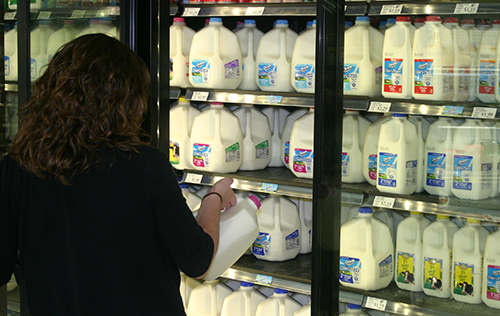
"Do you have an article, chart or documentation that shows the relationship between somatic cell count (SCC) to dairy product shelf life?"
That was a thoughtful question poised by a Hoard's Dairyman Intel reader in response to the item: "Somatic cell counts have flatlined."
In that item, we had made the statement: "As SCC levels drop, not only does that indicate reduced infections in the dairy herd, but improved milk flow as healthier cows produce more milk. On the dairy product front, lower somatic cell count milk also has a longer shelf life in the grocery store."
It was that last statement that sparked the question.
There in fact have been a number of studies on the topic of higher milk quality leading to the creation of longer-lasting, better-tasting products. Perhaps the best pair of studies come from Cornell University. Professor David Barbano was involved with both of those projects.
The first study took place in 1991. Barbano and his Cornell team concluded the following:
- Milk casein, as a percentage of true protein, was lower when milk SCC was high. As it turns out, lower milk casein levels reduce cheese yield efficiency. That means cheesemakers get less cheese. Like milk protein, high SCC also hampered milkfat retention.
- Cheese moisture levels rose in higher SCC milk. Again, more moisture leads to less finished product. What is a high SCC? Anything above 100,000 SCC started to have an impact based on this Cornell study.
- While independent of SCC, milk that had a few days of age on it - think one versus five days - yielded less cheese, as well.
Low SCC milk, less than 100,000 SCC, had a much more stable shelf life. After 21 days, low SCC beverage milk (that was chilled properly for the entire shelf life) still had a good taste.
What about its higher SCC counterpart?
Between 14 and 21 days, trained consumer panelists could detect rancidity and bitterness.
Why?
The milk had higher level of lipolysis and proteolysis. Those two terms mark the breakdown of fat and protein, hence the off flavor.
The Cornell research team's conclusion?
"It is recommended that the fluid milk industry consider implementation of premium-quality payment programs for low SCC milk."
(c) Hoard's Dairyman Intel 2016
March 21, 2016








